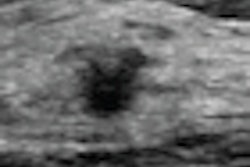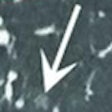
While utilization of high-tech imaging modalities soared and then slipped over the past decade, use of the humble chest x-ray has continued at a relatively stable rate, according to a study presented at the RSNA 2012 conference.
Dr. David C. Levin and Dr. Vijay Rao from Thomas Jefferson University found that chest x-ray utilization remained relatively stable from 2000 to 2010, with growth tracking closely to overall increases in the Medicare population.
"We have found that in the lower-tech area of plain x-ray, the utilization rates remain pretty stable," Levin told AuntMinnie.com.
High growth in high-cost services
During the past few years, Levin and Rao have published a number of studies analyzing utilization patterns of advanced diagnostic imaging services over the past decade. In general, they have found that growth in high-cost services such as CT and MRI rose rapidly until 2006, and then began falling on the heels of reimbursement cuts in Medicare and Medicaid.
 Dr. David C. Levin.
Dr. David C. Levin.
Chest radiography was one area the team hadn't studied, so they decided to address the modality in the current research. They analyzed Medicare Part B data over 10 years, from 2000 to 2010, selecting CPT codes for chest radiography and calculating utilization rates per 1,000 beneficiaries.
They found slow growth in chest radiography. In 2000, 30.3 million chest x-rays were performed in Medicare patients; 10 years later, this number had grown only 7.3% in aggregate, to 32.5 million, an annual growth rate of less than 1% per year.
This basically tracked the growth in the Medicare patient population, which rose from 32.8 million in 2000 to 35.3 million in 2010, an aggregate increase of 7.6%. The utilization rate per 1,000 beneficiaries went from 924 exams per 1,000 beneficiaries in 2000 to 921 in 2010, essentially flat.
"There's been virtually no growth in overall utilization rates of chest x-rays," Levin said. "That's different than in the high-tech modalities, where there was lots of growth from 2000 until about 2006."
X-ray turf battles?
Levin and Rao's previous research has tracked the fierce turf battles waged over various advanced imaging modalities -- battles that invariably are lost by radiology. Chest x-ray appears to be different, however. Radiologists performed 85% of the studies in 2000, a share that actually rose to 89% in 2010.
And use of chest x-ray fell among most physician specialists, the group found.
Medical chest x-ray volume by physician type
|
The data indicate that self-referral isn't much of a problem in chest radiography, which in turn keeps utilization in check. In fact, Levin believes that physicians who own their own chest x-ray units operate them primarily for the convenience of patients, whereas nonradiologist physicians who run scanners such as CT and MRI tend to be of a more entrepreneurial bent.
"I guess it's because the doctors who have put these machines in are probably not the entrepreneurial type; they have had these machines for years, they do it for the convenience of the patient," he said. "Whereas the ones looking to make money put in higher-tech machines."
A quick look at the cost profile of chest x-ray bears that out. In the Philadelphia area, Medicare pays a total of $33.73 for a chest x-ray, which includes the professional and technical components of the exam. That compares with $337.02 for a chest CT with contrast, and $564.76 for a chest MRI with contrast.
Levin said he was puzzled by the steep decline in chest x-ray use among primary care physicians relative to other physician specialties, especially given the large number of procedures they perform. He believes it could be due to initiatives being implemented in some states that require doctors to be accredited before performing the exams. But also, in general, chest exams have been shifting from x-ray to CT due to the latter modality's improved capabilities.
Given the political battle over Medicare reimbursement and the related tussle over physician self-referral, does Levin believe the current study has lessons for federal policymakers?
"You have a lot of self-referral in chest radiography, but it pales in comparison to utilization by radiologists," he said. "The lesson for policymakers is that if you take away the ability to self-refer, you're going to be able to control utilization."






